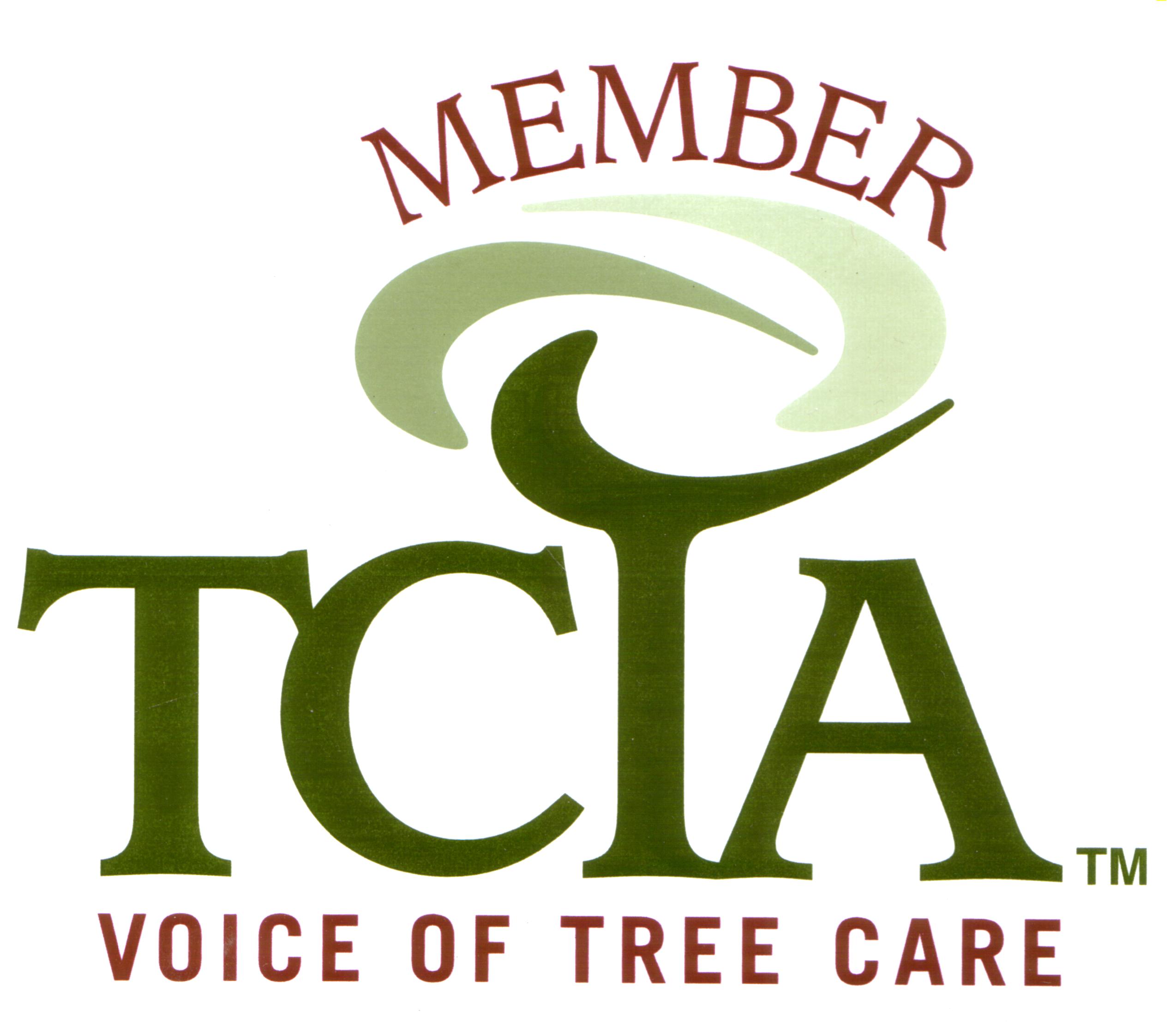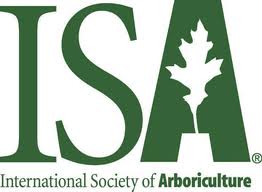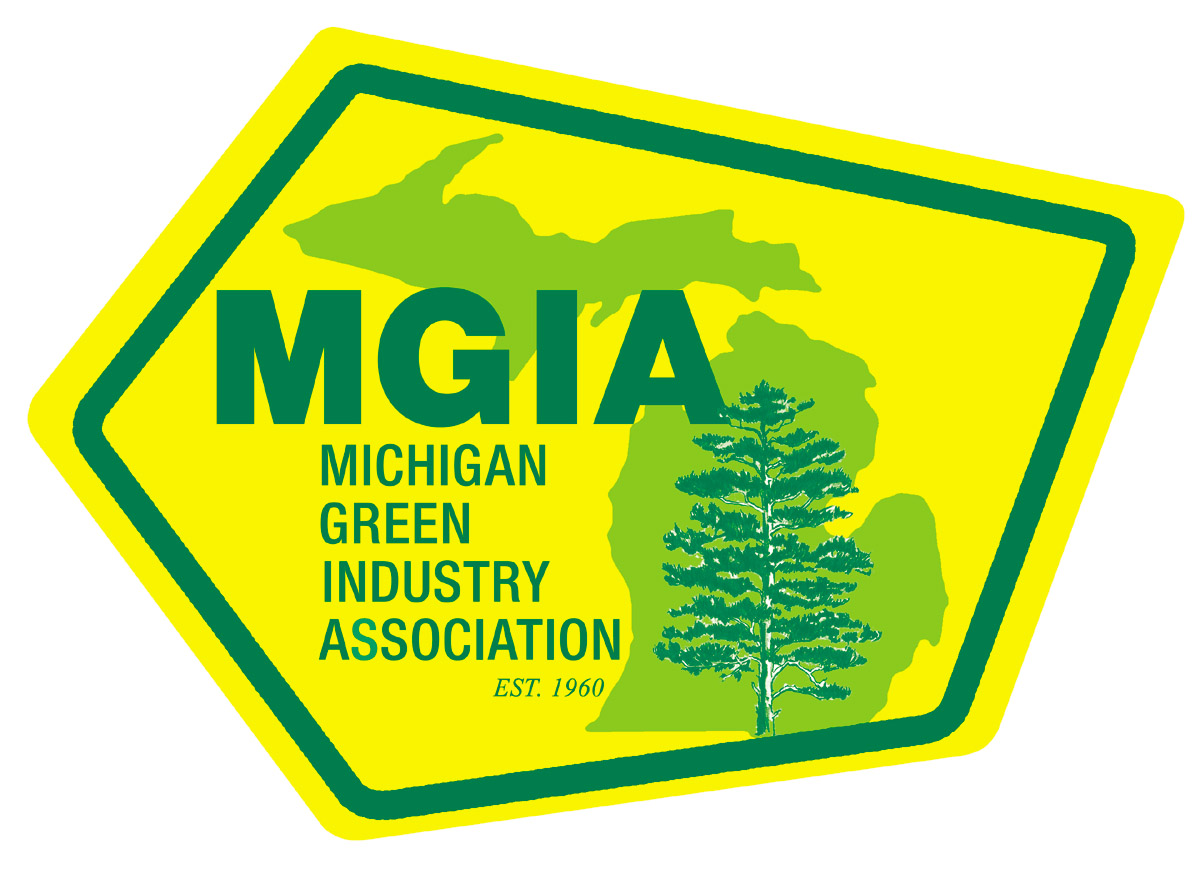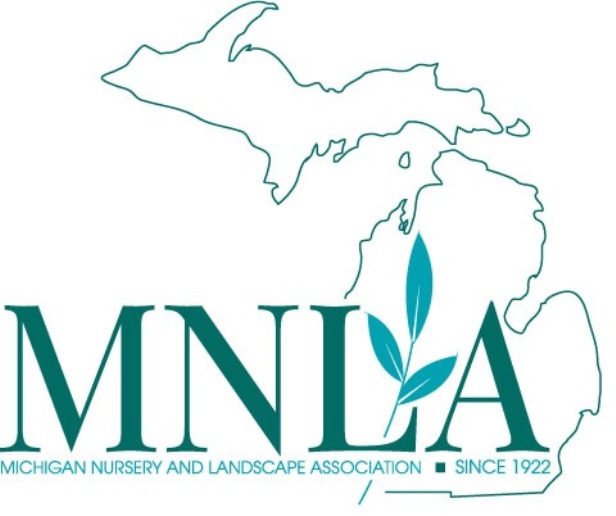LYME DISEASE
Overview
Since the discovery of 51 individuals suffering from this disease in Lyme, Connecticut in 1975 Lyme disease has been reported in all 50 states. According to the CDC the number of tick borne diseases grew from over 22,000 in 2004 to more than 48,000 in 2016. Lyme disease accounted for 82% of all tick borne diseases during this time period. In 2017 the CDC reported 291 human cases of Lyme disease in Michigan.
The Lyme Disease Triangle
The blacklegged tick will remain a nymph throughout the summer. Meanwhile, if it has been infected with Lyme disease, the bacteria will continue to multiply within the body of the blacklegged tick nymph. The nymph will overwinter in the leaf litter until the following spring.
By spring the nymph has exhausted all of its energy supplies and requires another blood meal. An infected blacklegged tick may transmit the disease to a mammal at this time. It is very important to note the word may. If the unsuspecting mammal is a human the infected blacklegged tick must feed for 36-48 hours to transfer enough bacteria to cause an infection. After this amount of time the tick will be full of blood and engorged. This is very important to remember. After it feeds, it molts and turns into the adult form. This usually occurs from mid to late summer.
The adult blacklegged tick needs a blood meal in order to mate and manufacture eggs. The most likely host for blacklegged tick adults in Michigan is the whitetail deer. Humans can also serve as a host for adult blacklegged ticks. Before the end of fall the adults have usually dropped from the host, mated and found a comfortable spot to overwinter. Only the female lives past the fall season.
Blacklegged Tick Identification
In Michigan, there are three key players in the Lyme disease triangle: the blacklegged tick (formally identified as deer tick), the white-footed deer mouse and the whitetail deer. The story starts in the spring. Hibernating female blacklegged ticks, laden with eggs, start to become active when the weather warms. Eggs are deposited in the leaf litter on the ground. A short time later a blacklegged tick larva hatches from the egg. A larva cannot carry the disease (i.e., it cannot be passed from infected adult female to egg to larva). Ticks are blood feeders. The new larva must find a mammal to feed on or it will die. The most likely candidates are small mammals such as mice, squirrels, birds etc. If the mammal is carrying the bacterial disease it is passed on to the blacklegged tick larva. The most common reservoir of the disease seems to be the white-footed mouse. After the larva has fed successfully, it drops off the mammal, molts and turns into the next growth stage called a nymph.
There are over 20 known species of ticks that occur in Michigan. The American dog tick is the most common tick found in Michigan. According to the Michigan Department of Health and Human Services (MDHHS) 65% of all tick specimens submitted for identification in 2018 were American dog ticks. If you notice white markings on the body of the tick it is probably an American dog tick.
32% of ticks identified in 2018 by MDHHS were blacklegged ticks. This is the tick species responsible for spreading Lyme disease. These ticks have black legs and a black to dark brown shield behind their head. Ticks that do not have white markings increase the chances that it may be a blacklegged tick.
Due to their size it can be pretty difficult to positively identify each tick species. Howard Russell, an entomologist from Michigan State University said he can identify ticks from a good photograph. "Email me a photo of it," he said. "As long it is taken in good light and in focus and you show me the back of the tick, there is a good chance I can tell you what it is."
Howard Russell can be reached at: bugman@msu.edu
MDHHS can also provide expert tick identification. Learn more by visiting www.michigan.gov/lyme
American dog tick. Photo: Mohammed El Damir, Bugwood.org
Tick Removal Procedure
There is only one right way to remove a tick from your body. Do not grab it and pull it off. Squeezing an engorged tick will squirt all of its contents into you. Use narrow tipped tweezers to get under the mouthparts and pull straight up. After removal wash your hands and treat the bite area with an antiseptic.
You may want to preserve the tick after removing it by placing it in a container of alcohol. If you later exhibit Lyme disease symptoms you will have the specimen in hand when you visit your physician.
CONTACT OWEN TREE AT:
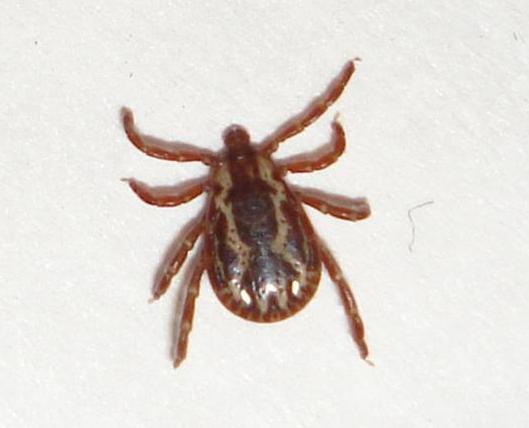
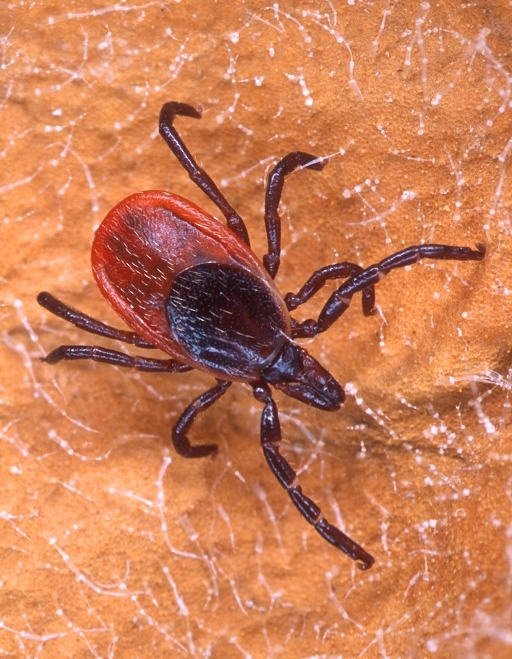
Adult blacklegged tick. Photo: Scott Bauer, USDA Ag. Research Service, Bugwood.org
Lyme Disease Symptoms
From two days to a month after being bitten by a blacklegged tick infected with Lyme disease, about 70% of infected people will develop a rash at the site of the bite. The rash usually expands from a small red spot into a light red or slightly purplish circle or oval about 2 inches in diameter – sometimes it may be much larger. The rash usually appears to be red on the perimeter and clear in the center. This is referred to as a bullseye rash. Other early signals include flu-like symptoms.
Lyme disease can easily be mistaken for other ailments, but there are blood tests that can accurately predict the presence of the disease. Treatment is a relatively simple antibiotic regime.
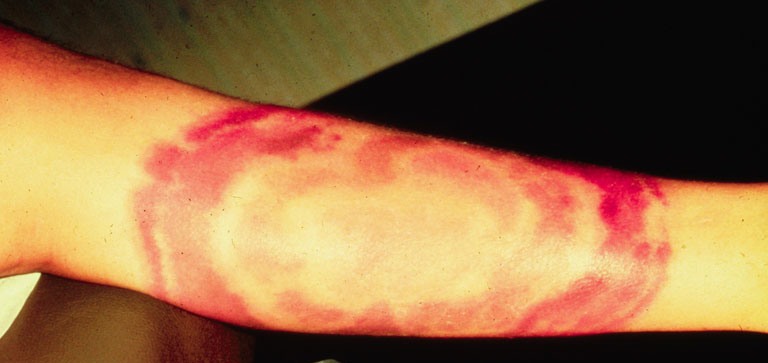
Bullseye rash caused by Lyme disease. Photo: Allen C. Steere, Bugwood.org
How to prevent tick bites
• If you venture into grassy or wooded areas cover as much of your skin as possible by wearing a hat, long-sleeved shirt and long pants.
• Tuck pant legs into your shoes or boots.
• Wear light colored clothing so it is easier to see a tick that might be on you.
• Do a thorough body check after being outdoors.
• Shower as soon as you can to wash off or find any ticks that could have been picked up on your clothing.
• Wash and dry clothes immediately that were worn outdoors to kill any ticks that may have hitched a ride with you.
• Use insect repellent to discourage ticks from staying on your clothes.
• Tuck pant legs into your shoes or boots.
• Wear light colored clothing so it is easier to see a tick that might be on you.
• Do a thorough body check after being outdoors.
• Shower as soon as you can to wash off or find any ticks that could have been picked up on your clothing.
• Wash and dry clothes immediately that were worn outdoors to kill any ticks that may have hitched a ride with you.
• Use insect repellent to discourage ticks from staying on your clothes.
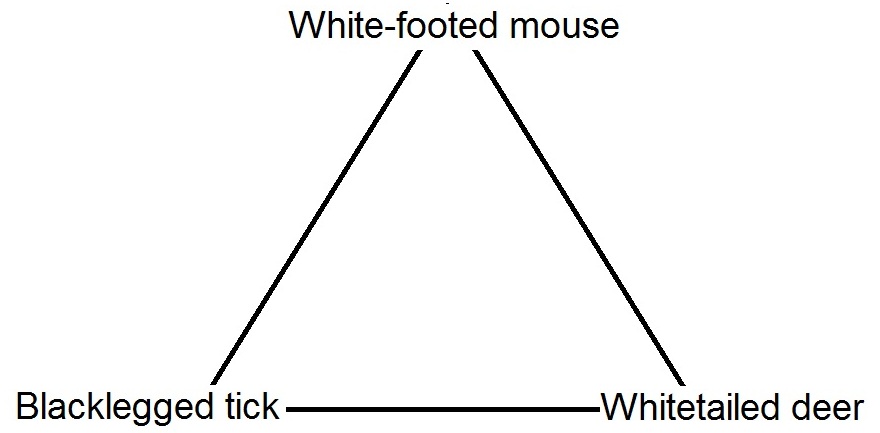

● Leonard
Owen Tree Service provides tree, lawn, and landscape services to the following cities and towns:
Genesee County, Michigan:
● Burton
● Davison
● Flushing
● Goodrich
● Linden
● Otisville
● Clio
● Fenton
● Gaines
● Grand Blanc
● Montrose
● Otter Lake
● Flint
● Genesee
● Lennon
● Mt Morris
● Swartz Creek
Lapeer County, Michigan:
● Almont
● Brown City
● Columbiaville
● Imlay City
● Metamora
● Peck
● Attica
● Clifford
● Dryden
● Lapeer
● North Branch
● Sandusky
● Hadley
● Mayville
● Otter Lake
● Silverwood
Macomb County, Michigan:
● Armada
● Clinton Twp
● Grosse Pointe
● Macomb
● New Haven
● St Clair Shores
● Centerline
● Detroit
● Grosse Pointe Farms
● Ray
● Sterling Heights
● Chesterfield
● Eastpointe
● Grosse Pointe Shores
● Memphis
● Romeo
● Utica
● Clinton
● Fraser
● Grosse Pointe Woods
● Mt Clemens
● Roseville
● Warren
● Harrison Twp
● New Baltimore
● Shelby Twp
● Washington
Oakland County, Michigan:
● Auburn Hills
● Bloomfield Village
● Ferndale
● Orion
● South Lyon
● Berkley
● Clarkston
● Franklin
● Madison Heights
● Ortonville
● Southfield
● Beverly Hills
● Clawson
● Hazel Park
● Milford
● Oxford
● Troy
● Bingham Farms
● Commerce Twp
● Highland
● Novi
● Pleasant Ridge
● Walled Lake
● Birmingham
● Davisburg
● Holly
● Oak Park
● Pontiac
● Waterford
● Bloomfield
● Detroit
● Huntington Woods
● Oakland
● Rochester
● West Bloomfield
● Bloomfield Hills
● Farmington
● Lake Orion
● Oakland Twp
● Rochester Hills
● White Lake
● Farmington Hills
● Lathrup Village
● Orchard Lake
● Royal Oak
● Wixom
St. Clair County, Michigan:
● Algonac
● Casco
● East China
● Harbor Beach
● Lexington
● Peck
● Allenton
● Clay
● Emmett
● Harsens Island
● Marine City
● Port Huron
● Berlin
● Clyde
● Fair Haven
● Jeddo
● Marysville
● Richmond
● Brockway
● Columbus
● Fort Gratiot
● Kimball
● Memphis
● Sandusky
● Capac
● Cottrellville
● Goodells
● Lakeport
● North Street
● St Clair


